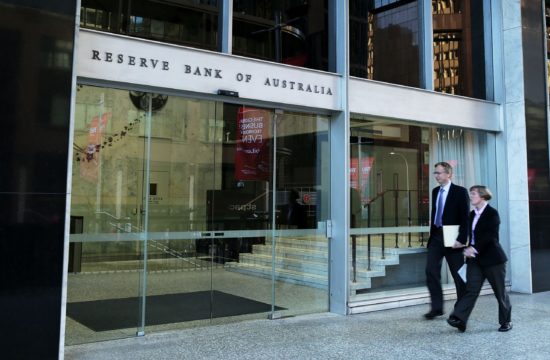Learn about the economic impact of the COVID-19 pandemic and the Bank’s actions to support the Canadian economy and financial system.
COVID-19 and the economy
The COVID-19 pandemic represents a serious health threat to people around the world, and a significant disruption to daily life. It is having a major impact on the global and Canadian economies. Every sector of the Canadian economy will be affected. Some sectors, such as the energy, travel and hospitality and service industries, are being particularly hard hit.
The public health actions needed to contain the spread of the virus, such as school closures, states of emergency, and social distancing measures, while necessary, are themselves going to significantly impact economic activity.
However, it’s important to underscore that while the impact is large, it will be temporary. Authorities around the world have taken bold and necessary measures to contain the spread of the virus and to support people and businesses through a very challenging time.
What the Bank is doing
Our immediate goal is to help Canadians bridge this difficult period by making credit affordable and available. As many economic activities are temporarily shut down, companies rely on credit to continue to pay their employees, and households need credit to continue spending to meet their basic needs. But they may be unable to borrow if financial turmoil curtails lending activity.
The central bank must therefore intervene to prevent a sudden contraction of credit when credit is most needed. If Canadians can’t borrow to weather this economic storm, the impact on the economy would be worse, the recovery will take longer and there will be long-lasting damage to Canada’s productive capacity.
Achieving our primary mandate of keeping inflation close to target requires us to stabilize the economy and employment first. In normal times, we can achieve our inflation objective by setting the policy interest rate at the appropriate level. However, during major disruptions to the economy and financial markets such as those we are experiencing with COVID-19, we need to take more comprehensive measures to ensure that the financial system continues to play its role of providing credit where it is needed.
For these reasons, the Bank of Canada is acting in several ways to support the economy and financial system and stands ready to take any and all actions that we can to protect the well-being of Canadians during this difficult time.
Monetary policy
We have lowered interest rates to support economic activity and keep inflation low and stable. These moves work by lowering payments on existing and new loans throughout the economy. The Bank has additional tools in its monetary policy toolkit that can be used to further support the economy and achieve the inflation target.
Support to key financial markets
We are intervening to support key financial markets to ensure they continue to function properly. These interventions include an expanded buyback program for Government of Canada bonds and expanded purchases of Canada Mortgage Bonds (CMBs).
In times of market turmoil, financial institutions may be reluctant to act in their normal role as market makers for bonds and other financial assets. Market makers hold inventories of securities and quote prices at which they will buy and sell—activities that may become prohibitively risky when the prices of these securities are fluctuating widely. Buyers and sellers may then find it difficult to trade—in other words, the market becomes illiquid.
This is particularly problematic in the case of friction in the market for Government of Canada bonds, which are often held as the safest Canadian-dollar asset. Those holding a bond may find it difficult to sell it to obtain cash, while those wishing to buy a bond for its safety may be unable to obtain it. Given the central role of Government of Canada bonds, including as a benchmark for other interest rates, such market illiquidity can have pervasive effects through the financial system. As the liquidity of markets for certain maturities of Government of Canada bonds has been diminished through this period, the Bank of Canada, as fiscal agent of the Government, has expanded a program of buybacks, whereby it offers to purchase less-widely-traded bond issues from investors and sells more-widely-traded ones in return.
Canada Mortgage Bonds (CMBs) are another key financial market in Canada. Financial institutions use CMBs to finance their mortgage lending to Canadian homeowners. The functioning of this market was also becoming impaired amid broader market turmoil. In response, the Bank of Canada introduced a program of purchasing CMBs. This helps provide the means for financial institutions to renew mortgages during this period, as well as supports the flow of credit more generally.
We also launched the Bankers’ Acceptance Purchase Facility (BAPF). The Bankers Acceptance market is one of Canada’s core funding markets and a key source of financing for small- and medium-size corporate borrowers.
In addition, the Bank announced a new program to support the liquidity and efficiency of provincial government funding markets. The Provincial Money Market Purchase (PMMP) program will support a liquid and well-functioning market for short-term provincial borrowing.
Liquidity support for financial institutions
Given that the size and duration of the impact of COVID-19 are highly uncertain, credit markets may become impaired. This is both because financial institutions face difficulties in obtaining funding for their lending as well as because they may become reluctant to lend in fear that many borrowers may be unable to pay. The problem of funding is partly system-wide and partly specific to individual institutions: in the context of market turmoil there is a generalized desire for safer assets, but even if that demand is satisfied in aggregate, some financial institutions may have difficulty obtaining funding.
Our interventions have thus far included ready access to funding by lengthening the term over which we lend money to banks, widening the collateral we accept to provide lending, and expanding the list of eligible institutions that can access our lending. Widening accepted collateral helps in two ways: it enables institutions holding that collateral to obtain financing so they can continue other lending, and it supports the functioning of markets for those assets accepted as collateral. As the economic impact of COVID-19 grows and businesses and individuals seek more funds from their lines of credit, the Bank will take the necessary measures to ensure credit continues to flow.
At the same time as we are providing liquidity to the financial system as a whole, we are also prepared to help viable financial institutions who face challenges in these choppy markets. We have established a new Standing Term Liquidity Facility (STLF) to help banks better manage their liquidity risks and continue to provide their customers with access to credit. To access the STLF, financial institutions can pledge a broader set of collateral, including mortgages, which significantly increases their funding capacity. The Bank of Canada encourages the use of the STLF by banks to help them continue to provide loans to households and businesses when they need it most.
Our actions work together
The actions we are taking are mutually reinforcing:
- Liquidity support for financial institutions improves market functioning
- Well-functioning markets positively affect the ability of financial institutions to operate
- Monetary policy easing (a lower interest rate) is more effective when markets are functioning, and banks have the liquidity they need to lend to business and households.
International co-operation
The Bank is also coordinating its actions with international policy makers, such as G7 central banks, and economic and financial partners in Canada.
For example, during the global financial crisis of 2007–08, the Bank established US-dollar swap lines with other central banks to ensure Canada’s financial institutions have access to US dollars. Most Canadian banks have US branches or subsidiaries and thus have access to US-dollar funding through the Federal Reserve’s discount window, so these swap lines weren’t used at the time. Nevertheless, should a Canadian bank need to borrow in US dollars, the swap lines give the Bank of Canada the ability to meet that need. This facility provides the Bank with additional flexibility to address rapidly evolving developments in financial markets.
Speeches and Statements
The Bank will continue to ensure Canadians have access to up-to-date information on its actions to support the economy and promote a safe and sound financial system in the face of the COVID-19 pandemic.
Key announcements
Monetary policy
Bank of Canada lowers overnight rate target to ¾ percent
The Bank of Canada today lowered its target for the overnight rate by 50 basis points to ¾ percent, effective Monday, March 16, 2020. The Bank Rate is correspondingly 1 percent and the deposit rate is ½ percent. This unscheduled rate decision is a proactive measure taken in light of the negative shocks to Canada’s economy arising from the COVID-19 pandemic and the recent sharp drop in oil prices.
Bank of Canada lowers overnight rate target to 1 ¼ percent
The Bank of Canada today lowered its target for the overnight rate by 50 basis points to 1 ¼ percent. The Bank Rate is correspondingly 1 ½ percent and the deposit rate is 1 percent.
Support to key financial markets
Bank of Canada Announces New Program to Support Provincial Funding Markets
The Bank of Canada today announced a new program to support the liquidity and efficiency of provincial government funding markets.
Bank of Canada Announces Additional Measures to Support Market Functioning
The Bank is announcing four measures today designed to support market functioning given the rapidly evolving uncertainty around the impact of COVID-19.
Revised operational details for the first Banker’s Acceptance Purchase Facility operation
As previously announced, the Bank of Canada (Bank) will conduct the first operation under the Banker’s Acceptance Purchase Facility (BAPF) on Monday, March 23, 2020. The operational details have been adjusted based on market conditions to the following
Bank of Canada Announces Temporary Expansion to the List of Eligible Securities for its Term Repo Operations and Changes to Upcoming Operations
The Bank of Canada (Bank) is committed to supporting the efficient and continuous functioning of financial markets during the current period of uncertainty in which conditions are evolving rapidly.
Operational details for the upcoming Expansion of the Bank of Canada’s Bond Buyback Program
Consistent with the announcement that the Bank of Canada (the Bank), acting as fiscal agent, will extend its buybacks across all benchmark maturity sectors, The Bank is announcing today the following operations for this week and next week
Operational details on the Bank of Canada’s Bankers’ Acceptance Purchase Facility
As previously announced, the Bank of Canada (Bank) will conduct secondary market purchases of 1-month Bankers’ Acceptances issued and guaranteed by any Canadian bank and of sufficiently high quality, broadly equivalent to a minimum short-term credit rating of R-1 (low), under the Bankers’ Acceptance Purchase Facility (BAPF).
Operational details for the Bank of Canada’s purchase of Canada Mortgage Bonds (CMBs) in the secondary market
Consistent with the announcement that the Bank stands ready, as a proactive measure, to provide support to the Canada Mortgage Bond (CMB) market, the Bank will purchase CMBs in the secondary market through a competitive tender process.
New Bank of Canada Measures to Support Key Funding Markets
The Bank of Canada is committed to supporting the efficient and continuous functioning of financial markets during the current period of uncertainty in which conditions are evolving rapidly.
Bank of Canada’s Intention to Introduce a Bankers’ Acceptance Purchase Facility
In order to support the continuous functioning of financial markets, the Bank of Canada (Bank) is announcing its intention to launch the Bankers’ Acceptance Purchase Facility (BAPF).
Bank of Canada Announces the Expansion of its Bond Buyback Program and Term Repo Operations
In order to support the continuous functioning of financial markets through the provision of liquidity, the Bank of Canada announced two measures today.
Liquidity support for financial institutions
Bank of Canada launches the Standing Term Liquidity Facility
The Bank of Canada (the Bank) is announcing the launch of its new liquidity facility, the Standing Term Liquidity Facility (STLF), effective March 30, 2020.
Additional Temporary Changes to the Bank of Canada’s Standing Liquidity Facility Collateral Policy Regarding the Non-Mortgage Loan Portfolio and Settlement Balances
Under its Standing Liquidity Facility (SLF), the Bank of Canada is prepared to provide liquidity on a daily basis to financial institutions that participate directly in the payments systems operated by Payments Canada. Loans made by the Bank of Canada must be fully collateralized.
Temporary Changes to the Bank of Canada’s Standing Liquidity Facility (SLF) Collateral Policy Regarding the Non-Mortgage Loan Portfolio (NMLP) and Settlement Balances
Under its Standing Liquidity Facility (SLF), the Bank of Canada is prepared to provide liquidity on a daily basis to financial institutions that participate directly in the payments systems operated by Payments Canada. Loans made by the Bank of Canada must be fully collateralized.
International co-operation
Statement of G7 Finance Ministers and Central Bank Governors
Consistent with the direction from G7 Leaders, we are taking action and enhancing coordination on our dynamic domestic and international policy efforts to respond to the global health, economic, and financial impacts associated with the spread of the coronavirus disease 2019 (COVID-19).
Coordinated Central Bank Action to Further Enhance the Provision of U.S. Dollar Liquidity
The Bank of Canada, the Bank of England, the Bank of Japan, the European Central Bank, the Federal Reserve, and the Swiss National Bank are today announcing a coordinated action to further enhance the provision of liquidity via the standing U.S. dollar liquidity swap line arrangements.
Coordinated Central Bank Action to Enhance the Provision of Global U.S. Dollar Liquidity
The Bank of Canada, the Bank of England, the Bank of Japan, the European Central Bank, the Federal Reserve, and the Swiss National Bank are today announcing a coordinated action to enhance the provision of liquidity via the standing U.S. dollar liquidity swap line arrangements.
Statement of G7 Finance Ministers and Central Bank Governors
We, G7 Finance Ministers and Central Bank Governors, are closely monitoring the spread of the coronavirus disease 2019 (COVID-19) and its impact on markets and economic conditions.
Speeches and statements
Press Conference Opening Statement – March 18, 2020
The Bank of Canada has been working hard to ensure the financial system has sufficient liquidity so that credit continues to be available to businesses and households.
Summary of Deliberations of Governing Council, March 13, 2020
Governing Council’s decision to cut interest rates on Friday, 13 March, 2020 took place under unique circumstances. As such, Governing Council is offering this statement of its reasoning from the decision of March 13.
Canada outlines measures to support the economy and the financial sector
Today, Minister of Finance Bill Morneau, Governor of the Bank of Canada Stephen Poloz, and Superintendent of Financial Institutions Jeremy Rudin outlined a coordinated package of measures being taken by financial sector partners to support the functioning of markets and continued access to financing for Canadian businesses.
Press Conference Opening Statement – March 13, 2020
The Bank of Canada is contributing to the collective effort to support the Canadian economy and financial system, and to ensure credit channels remain open.
Labour market is key to Canada’s resilience
Governor Stephen S. Poloz talks about how the labour market is a key source of resilience for Canada’s economy and reviews the Bank of Canada’s decision to lower interest rates.














